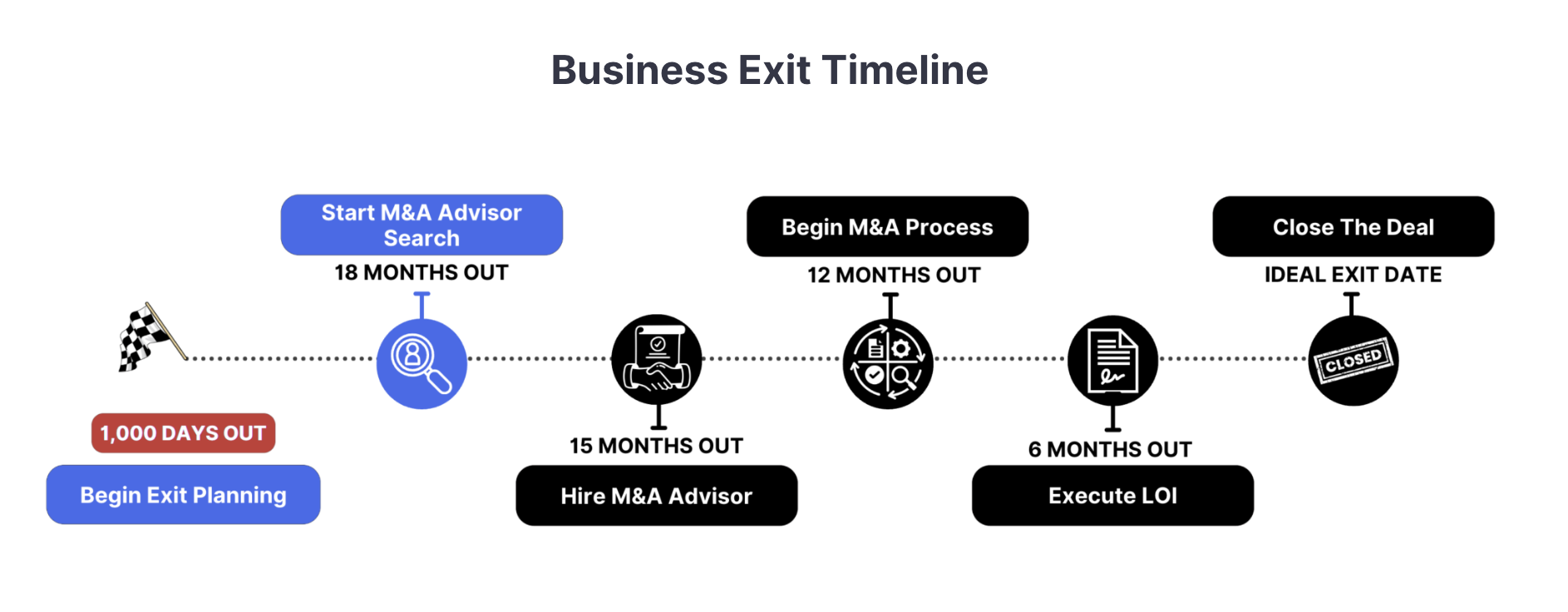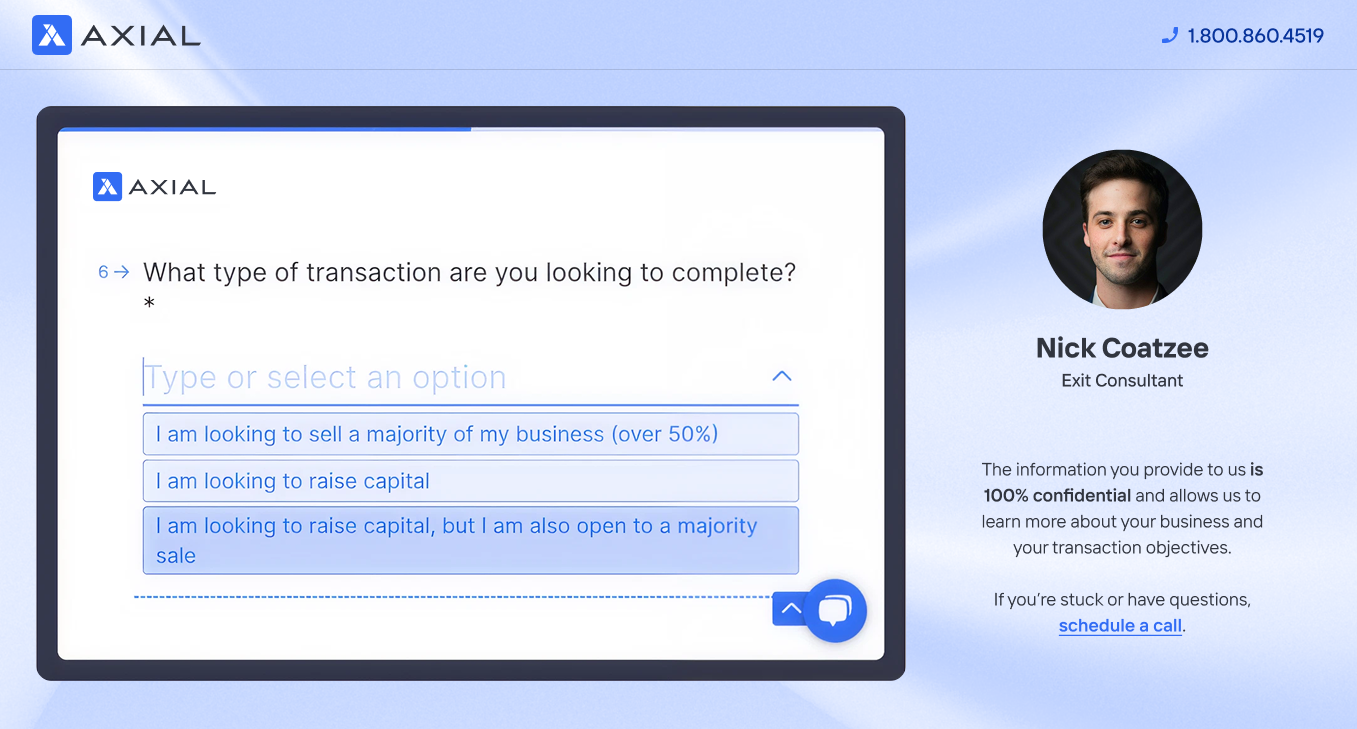
Who Will Buy Your HVAC Business?
If you’re an HVAC business owner thinking about selling—now or down the road—one question you might have is: Who will…
There are clear benefits to engaging in sell-side advisory services when exiting your business, including:
For most business owners, engaging a sell-side advisor, also known as an M&A advisor, is an essential part of exiting their business. What’s often less clear is what exactly an advisor does.
In this post, we’ll explore the specific actions sell-side advisors take to achieve these results. This will help you better understand the entire mergers and acquisitions process, when to engage an advisor, and the role you’ll play as a business owner in your exit.
Specifically, this post covers:
Are you looking for a sell-side advisor experienced in selling businesses like yours? Reach out today.
Sell-side advisory services are provided by investment banks, M&A advisory firms, and other specialized advisors to help business owners with sales, divestitures, mergers, and other transactions aimed at maximizing value and ensuring a smooth transition to new ownership.
For this post, we focus on M&A advisors assisting business owners in selling their business to a financial or strategic buyer.
Selling a business is a complex process that demands expertise in areas like financial analysis, marketing, and legal considerations. Business owners who try to handle the sale themselves risk undervaluing their company or making costly mistakes that could affect the deal.
Sell-side advisors help by collaborating closely with business owners to create a tailored strategy for marketing and selling the company to potential buyers, ensuring that the value is maximized at exit. They accurately value the business, prepare necessary materials, target potential buyers within their network, vet bids, handle negotiations, and help structure and close the deal.
At Axial, we’ve been involved in small business mergers and acquisitions for over 14 years. Our network includes more than 2,000 M&A advisors across industries such as healthcare, technology, industrials, and more. From our conversations with advisors and business owners, as well as analyzing sales data, we’ve outlined a general business exit timeline.

On average, the entire process spans around 1,000 days. The first phase, exit planning, can often be handled without an advisory firm. If you’re at this stage, you can learn more about how to properly start exit planning here. A solid exit plan smooths the transition to working with an advisory firm to sell your business.
Based on our timeline, it’s ideal to start seeking an M&A advisor 15 months before your target close date. This allows you to begin the M&A process 12 months prior to your desired exit.
Small business owners often struggle to sell their business. While they excel at running their business, they may lack the expertise to effectively showcase its value to potential buyers.
Demonstrating value and identifying the right buyers requires specialized knowledge and experience in mergers and acquisitions.
This is where sell-side advisors come into play for small businesses. They can help with:

Determining your business’s value through financial analysis and market insights helps assess if it’s the right time to sell. An advisor can identify areas for improvement, like reducing customer concentration, and consider external factors, such as industry regulations or buyer demand, that impact your valuation.
Advisors use three key analyses to determine your valuation range:
Conducting these analyses is complex. As a business owner, you may lack access to the necessary data. However, advisors with industry experience can leverage proprietary data from comparable companies and closed transactions.
Additionally, advisors can adjust valuations when comparing your company to larger ones, which is crucial since it’s rare to find data that perfectly matches your company’s geographic location, industry, and size.
Learn more about valuation methods in our post on how to value a company for sale.
Sell-side advisory services help you prepare for due diligence. Due diligence is a lengthy process where a buyer will be asking for and reviewing important business documents. They’re looking to make sure your business is as advertised. Working with an advisor helps you prepare for this process well in advance of reaching out to potential buyers.
There are several different aspects to due diligence, including:
Depending on factors like your preferences and business type, an advisor will use either a targeted (auction process) or non-targeted (limited process) approach to find buyers.
The choice isn’t about one method being better than the other, but which is better suited to your specific business.
Either way, advisors will craft a compelling marketing strategy to engage buyers and move them through the process.
The marketing plan will highlight your business’s strengths and future potential, demonstrating the value of your business in a way that’s targeted to the buyers. For example, advisors may position your business differently when targeting competitors or suppliers compared to financial buyers looking for a standalone investment.
You and your advisor will create a marketing package that showcases your business’s strengths and future potential. This package will include a teaser, an NDA, and a CIM.
Advisors will manage interest from potential buyers by responding to questions about the investment teaser and CIM, evaluating Indications of Interest (IOIs), and confirming that buyers are serious and financially capable of making an acquisition.
This creates an active funnel, with new leads processed by your advisor, resulting in only relevant, interested, and qualified buyers at the bottom.
The next step in the M&A process is evaluating Letters of Intent (LOIs) and executing the preferred offer.
An LOI typically includes:
Your advisor evaluates the LOIs on your behalf to ensure they align with your goals. While the LOI is not a final contract, it is an initial offer from potential buyers. Accepting an LOI is a key step that kicks off the final phase of closing the deal, which means you’re committed to a single buyer for a set period (usually 90–120 days).
An advisor will assess how closely the offer meets your objectives in terms of price and other conditions. For instance, if an offer includes a 3-year transition plan but you’re aiming for a one-year exit, your advisor will flag this discrepancy.
Advisors also anticipate potential issues, such as unrealistic post-sale benchmarks. If terms seem unreasonable, the advisor can argue for modifications or recommend rejecting the LOI.
Clear communication between you and the advisor is crucial — by understanding your expectations, the advisor can help you choose the right LOI. Once executed, you’re officially in the due diligence phase.
After executing the LOI, the process moves to the buyer completing due diligence, final negotiations, and either signing the deal or walking away.
With a sell-side advisory firm, you approach this stage with increased confidence. Your advisor has positioned your business to align with what the buyer needs, minimizing the risk of miscommunication.
This allows your advisors to focus on final details, helping you avoid last-minute complications or delays.
Key activities during this stage include:

At Axial, we leverage our experience working with M&A advisors to help you find the sell-side advisory firm that aligns with your overall goals and vision for your ideal exit.
We pair you with an Exit Consultant who understands your business and objectives, then connects you with the best options from our network of over 2,000 M&A advisors.
We evaluate these advisors based on:
1. Relevant deal experience
We assess the total number of relevant deals an advisor has marketed on Axial, giving priority to those within the last 24 months, as recency is key to sourcing data and targeting buyers. We also evaluate how effectively advisors generate buyer interest, using metrics such as the number of signed NDAs and CIMs distributed — two good indicators of engaged buyers.
Relevant deal experience is critical to finding the right M&A advisor. Highly rated advisors without industry-specific experience won’t provide the value you need. This expertise is key to unlocking business valuation, marketing materials, buyer targeting, and negotiation potential.
2. Down funnel success
We also evaluate how many bids have been issued on an advisor’s deals within the Axial network, focusing on bids from the last 24 months. These include benchmarks like receiving IOIs or LOIs. Additionally, we assess down-funnel success by reviewing relevant tombstones, which indicate previous successful deal closures.
3. Professionalism and reputation
At Axial, Account Managers gather feedback to ensure you’re connected with a professional and reputable advisor. We also use internal data to assign a Responsiveness score, reflecting how quickly an advisor responds to potential buyers.
Based on these factors, we curate a list of 3–5 M&A advisors for you. Our Exit Consultants guide you through the interview and hiring process to ensure you select the best advisor for your business.
We have free resources online to help you navigate your exit, including:
If you’re ready to hire an M&A advisor for your business, you can start the process here.
